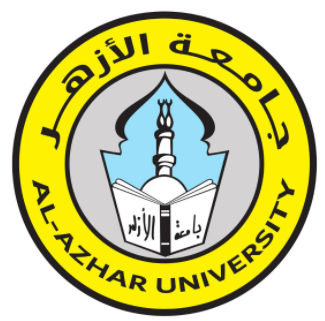Request Demo
Last update 08 May 2025
Secondary glaucoma
Last update 08 May 2025
Basic Info
Synonyms GLAUCOMA, SECONDARY, Glaucoma due to ocular disease, Glaucoma secondary + [10] |
Introduction- |
Related
1
Drugs associated with Secondary glaucomaTarget |
Mechanism CAs inhibitors |
Active Org. |
Originator Org. |
Active Indication |
Inactive Indication- |
Drug Highest PhaseApproved |
First Approval Ctry. / Loc. United States |
First Approval Date27 Jul 1953 |
28
Clinical Trials associated with Secondary glaucomaNCT06827535
Long-term Vascular, Functional and Morphological Changes in Glaucoma and Ocular Hypertensive Patients
This is an observational study involving patients with glaucoma, those with ocular hypertension and healthy subjects.
The aim of the study is the long term evaluation of functional, vascular and morphological changes in glaucoma and ocular hypertensive patients, compared to healthy subjects, to analyze the temporal relationship of these changes.
The aim of the study is the long term evaluation of functional, vascular and morphological changes in glaucoma and ocular hypertensive patients, compared to healthy subjects, to analyze the temporal relationship of these changes.
Start Date14 Nov 2024 |
Sponsor / Collaborator- |
CTR20241780
中国健康受试者空腹及餐后状态下单次口服乙酰唑胺缓释胶囊的单中心、开放、
随机、两制剂、两序列、两周期、双交叉人体生物等效性试验
[Translation] A single-center, open, randomized, two-formulation, two-sequence, two-period, double-crossover bioequivalence study of a single oral dose of acetazolamide sustained-release capsules in Chinese healthy subjects under fasting and fed conditions
研究健康受试者空腹及餐后单次口服受试制剂乙酰唑胺缓释胶囊(灵康药业集团股份有限公司,规格:500mg)与参比制剂乙酰唑胺缓释胶囊(持证商:Cadila Healthcare Limited,规格:500mg),比较两制剂中药动学参数 Cmax、AUC0-t 和 AUC0-∞,评价两制剂的人体生物等效性,并观察受试制剂和参比制剂在健康受试者中的安全性。
[Translation]
The study was conducted to compare the pharmacokinetic parameters Cmax, AUC0-t and AUC0-∞ of the test preparation, acetazolamide sustained-release capsules (Lingkang Pharmaceutical Group Co., Ltd., specification: 500 mg) and the reference preparation, acetazolamide sustained-release capsules (licensed manufacturer: Cadila Healthcare Limited, specification: 500 mg), in healthy subjects after single oral administration on an empty stomach or after meals, to evaluate the bioequivalence of the two preparations in humans, and to observe the safety of the test preparation and the reference preparation in healthy subjects.
Start Date02 Jun 2024 |
Sponsor / Collaborator |
NCT06925412
Sponge Application of MMC Versus Suntenon Injection in Trabeculectomy
Glaucoma is a leading cause of irreversible blindness worldwide, with intraocular pressure (IOP) reduction being the primary therapeutic goal. Trabeculectomy, augmented with mitomycin C (MMC), remains the gold standard surgical intervention but is limited by postoperative fibrosis. MMC delivery methods, including sponge application and sub-Tenon injection, vary in drug distribution and may influence surgical outcomes. This study aimed to compare the efficacy and safety of trabeculectomy using sponge-applied MMC versus sub-Tenon MMC injection, focusing on IOP reduction, bleb morphology, and postoperative medication requirements.
In this retrospective, randomized controlled trial, 50 patients with primary or secondary glaucoma were assigned to trabeculectomy with either MMC sponge application (Group A, n=25) or sub-Tenon MMC injection (Group B, n=25). All surgeries were performed by the same surgeon using standardized techniques. Patients were followed for one year, with primary outcomes including IOP reduction and secondary outcomes encompassing bleb morphology (Indiana Bleb Appearance Grading Scale), bleb integrity (Seidel test), and postoperative glaucoma medication use.
In this retrospective, randomized controlled trial, 50 patients with primary or secondary glaucoma were assigned to trabeculectomy with either MMC sponge application (Group A, n=25) or sub-Tenon MMC injection (Group B, n=25). All surgeries were performed by the same surgeon using standardized techniques. Patients were followed for one year, with primary outcomes including IOP reduction and secondary outcomes encompassing bleb morphology (Indiana Bleb Appearance Grading Scale), bleb integrity (Seidel test), and postoperative glaucoma medication use.
Start Date01 Feb 2024 |
Sponsor / Collaborator |
100 Clinical Results associated with Secondary glaucoma
Login to view more data
100 Translational Medicine associated with Secondary glaucoma
Login to view more data
0 Patents (Medical) associated with Secondary glaucoma
Login to view more data
2,734
Literatures (Medical) associated with Secondary glaucoma01 Jul 2025·Ophthalmology Science
Bidirectional Causal Relationships between Corneal Biomechanics and Glaucoma or Intraocular Pressure
Article
Author: Zhou, Xiaoyu ; Duan, Xuanchu ; Xu, Jiahao
01 Jun 2025·American Journal of Ophthalmology Case Reports
Coexistence of congenital lacrimal gland agenesis and congenital aniridia: Case report
Article
Author: Alenazi, Maram ; Alzaben, Khawlah A ; Alsulaiman, Sulaiman M ; Alshuhayb, Bayan S ; Alkhayyal, Mashael A
01 May 2025·Survey of Ophthalmology
The secondary childhood glaucomas
Review
Author: Lander, Beatrice ; Malik, Rizwan ; Edward, Deepak P ; Elsayed, Maram Ea Abdalla ; Elsayed, Maram EA Abdalla ; Senthil, Sirisha
Analysis
Perform a panoramic analysis of this field.
login
or

AI Agents Built for Biopharma Breakthroughs
Accelerate discovery. Empower decisions. Transform outcomes.
Get started for free today!
Accelerate Strategic R&D decision making with Synapse, PatSnap’s AI-powered Connected Innovation Intelligence Platform Built for Life Sciences Professionals.
Start your data trial now!
Synapse data is also accessible to external entities via APIs or data packages. Empower better decisions with the latest in pharmaceutical intelligence.
Bio
Bio Sequences Search & Analysis
Sign up for free
Chemical
Chemical Structures Search & Analysis
Sign up for free



